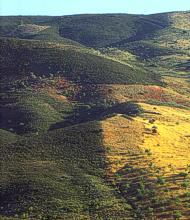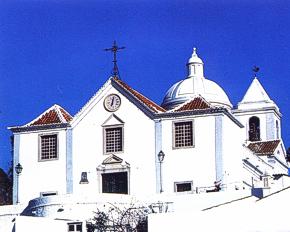|
Tourism |
|
| Portugal > Tourism > Algarve > Castro Marim | |
| History | Beaches | Golf | Places of Interest | The City | Lodging | Lodging Algarve | |
|
The elegant outline of flamingos. The dusty gold of soft sand, the turquoise blue of warm waters. Vast ranges of hills covered in a bright carpet of wild flowers. The tranquil countryside along the banks of the Guardania, lush with orchards and vegetable gardens. These are just a few facets of the municipality that stretches from the sea to the hinterland, with a river as its boundary.
|
|
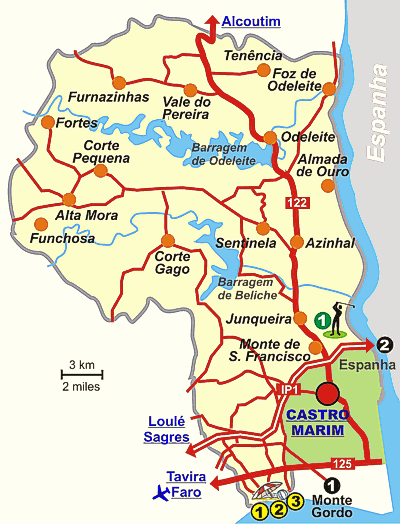
|
| History |
|
The remains of the first settlements in the area date from the Neolithic period (approximately) 5000 years BC). These persisted into the age of metals, possibly by wall of a fort situated on the bill where the castle now stands. During this period Castro Marim was closer to the sea than it is now. According to geological research it consisted of an island surrounded by shallow waters. For thousands of years Castro Marim was a port that offered shelter to the ships that sailed up the Guadiana river to collect the metals mined to the north in Alcoutim and Mértola. There is documentary evidence of the Phoenician and Roman presence in the area of the town which, during the time of the Moorish occupation, possessed a defensive structure that occupied what was originally the core of the present castle. In addition to the river routes on which Castro Marim's prosperity was founded, the town was also connected to Lisbon by a Roman road that ran parallel to the Guadiana river and passed through Alcoutim, Mértola and Beja. The Christian reconquest in 1242 was, followed, in the second half of the 13th century, by a policy of repopulating and reinforcing local defences in view of the town's strategic position on the border with the kingdom of Castile and attacks by Moorish raiders from North Africa. This explains why King Dinis (1261-1325) made Castro Marim the headquarters of the order of Christ; which had been established in 1319 to replace the Order of the Knights Templar. Years later; however the Order of Christ was transferred to Tomar, and this marked the beginning of a period of waning fortunes for the town and its surrounding area, which saw its population decline. To reverse this pattern, in 1421 King João I granted Castro Marim the privilege of being a "sanctuary for fugitives". Cut off from the sea, with an economy based for centuries on fishing, salt production, agriculture and boat building, Castro Marim and the surrounding municipality entered a long period of stagnation relieved only by the growing dynamism of recent decades. |
| Beaches |
|
|

| Golf |
|
|
|
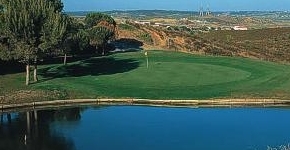 |
| Places of Interest |
|
The vastness of the "Serra" (Uplands) |
|
 |
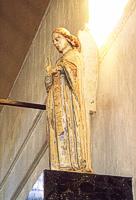 |
|
 |
|
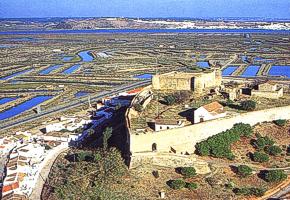 |
| Visiting the City of Castro Marim |
| Historical Centre - Linking the church, the castle and the fort, the streets of Castro Marim are lined with houses whose simplicity is typical of the architecture of the Algarve. White predominates, broken here and there by ochre and luminous blues. The bright borders painted on the facades bespeak a taste for geometrical patterns and floral motifs. |
|
Main Church - The building dates from
the 18th and 19th centuries and was originally a hermitage. The church
suffered considerable damage in a fire in 1960. The church's most
striking feature is its elegant bell tower. Surmounted by a false
clerestory. The main and side chapels are worth a visit for the statues
of the arcanjo São Gabriel (archangel Gabrial) (16th century).
which retains traces of polychrome decoration, Nossa Senhora da Encarnação
e dos Mártires (Our Lady of the Incarnation and of the Martyrs)
(16th century) and a finely proportioned Santa Luzia (St. Luzia). |
|
|
|
Santo António (St. Anthony) Hermitage - Occupying an airy spot high on a hill, this building contains a retable made up of seven panels depicting the miracles of the saint. |
|
The Castle - The fortified wall that surrounded the medieval town on top of the hill has its origins in the 13th/14th centuries. At the time of the wars of the Restoration (1610-1668) the castle was adapted in accordance with the latest techniques of warfare, including the introduction of artillery. The old castle stands on a broad open yard. Square shaped with circular towers at its corners and two gates, it is possibly Moorish in origin (10th to 13th centuries). The main gate bears an interesting design in relief, in the shape of a key, and marks typical of medieval stone masons. The ramparts still enclose the former Misericórdia, which has a Renaissance porch and inside, two 17th century tombs, and the ruins of buildings destroyed by the earthquake of 1755. These |
|
|
| include the main church (14th century ), which was dedicated to Santiago
(St. James), and the Alcaide's Palace. The castle affords an unrivalled
view of the Guadiana river, the town and its salt pans, as well as the
surrounding hills and, stretching away to the horizon, the sea. Fort of São Sebastião (St. Sebastian) - This defensive structure was built in the 17th century and was part of a set of ramparts that surrounded the town, some parts of which are still visible between the houses. |
|
Salt Marsh Natural Reserve |
|
|
|
to some species, a seasonal refuge for others and a migratory stopping
off point for yet others, it offers |
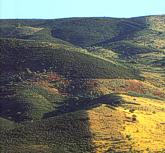 |
|
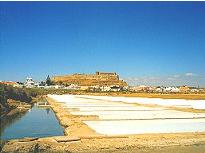 |
|
 |
| History | Beaches | Golf | Places of Interest | The City | Lodging | Lodging Algarve | |
| Portugal > Tourism > Algarve > Castro Marim | |
|
Castro
Marim |
|

